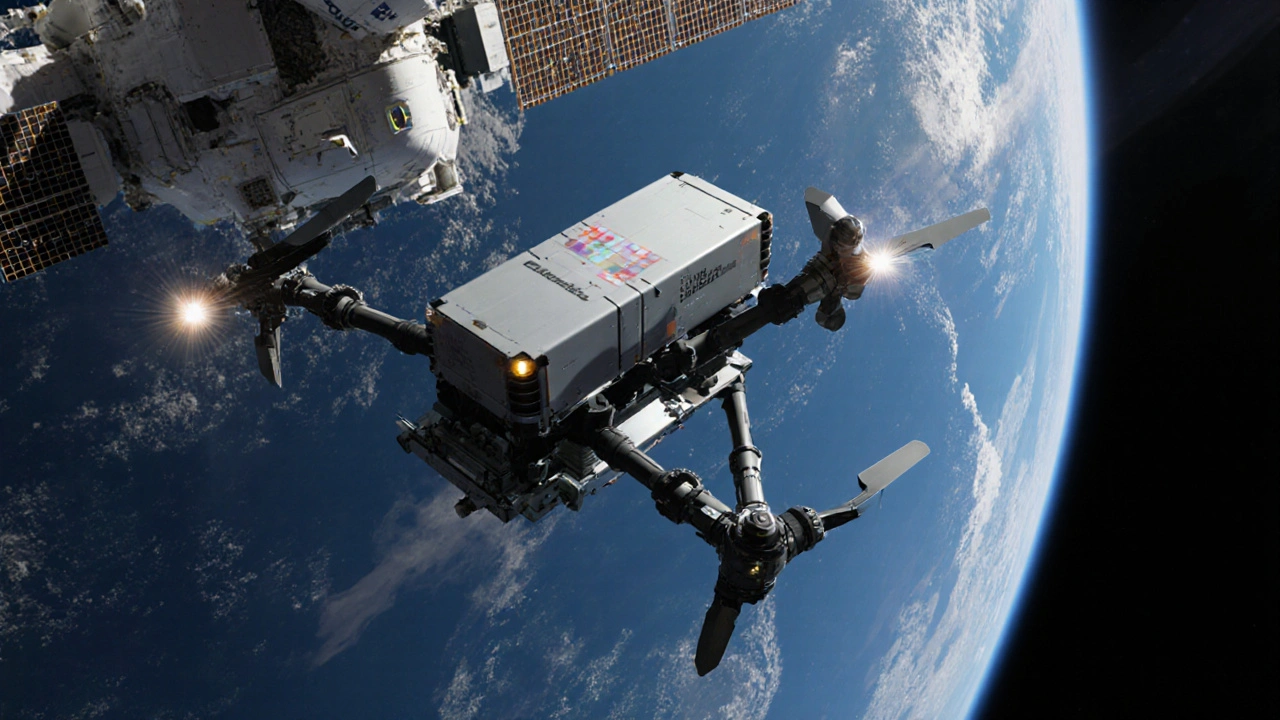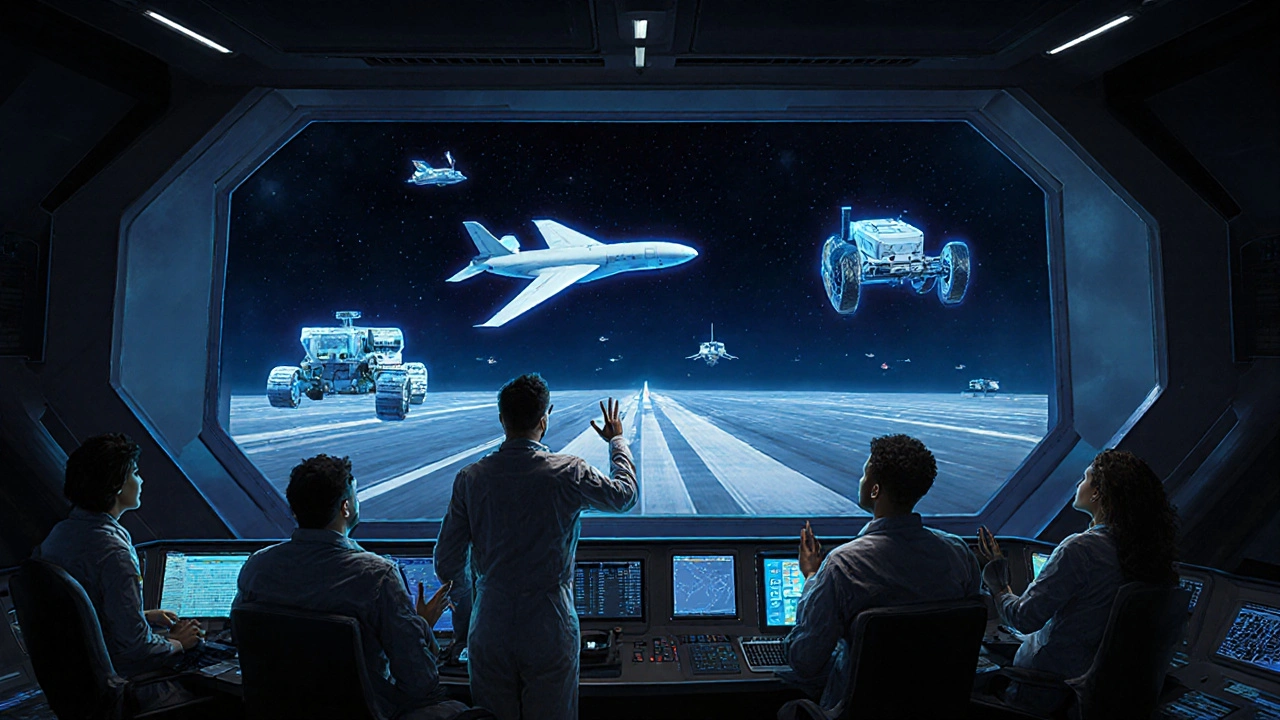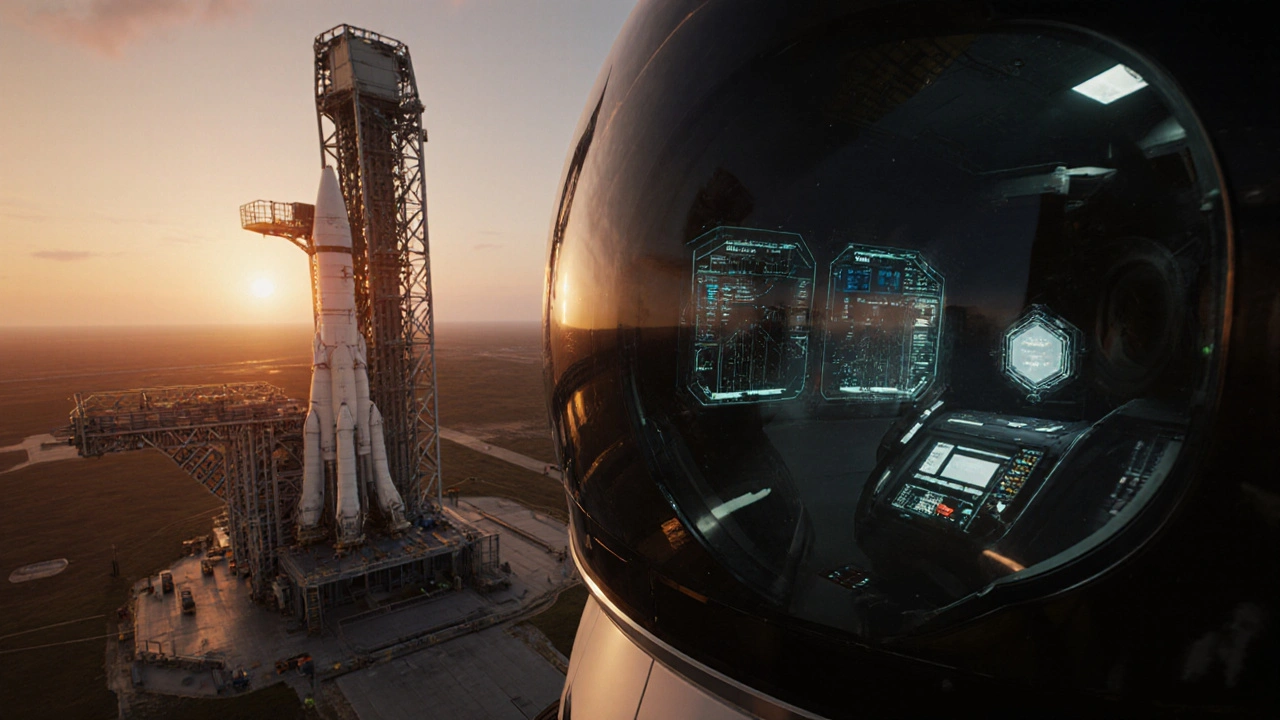Spacecraft Autonomy Comparison Tool
Compare Spacecraft Technologies
Select which autonomous spacecraft technologies you want to compare. The tool will show you their key attributes side by side.
Development Timeline
Imagine stepping onto a launch pad, buckling into a seat, and watching a sleek capsule climb toward orbit-only to discover that no human ever touched the controls. That scenario isn’t sci‑fi fantasy; it’s the direction many space agencies and commercial firms are already racing toward. The question on everyone’s mind is: what will eventually replace humans on space flights?
Quick Takeaways
- Automation is moving from ground‑based systems to fully autonomous spacecraft capable of independent decision‑making.
- AI pilots, robotic cargo drones, and space tugs are the front‑runners for crewless missions.
- Development timelines vary: some technologies could be flight‑ready by the early 2030s, others won’t mature until the 2040s.
- Key challenges include reliability under extreme conditions, regulatory approval, and ethical concerns about delegating life‑critical decisions to machines.
- Human roles will shift toward mission oversight, telepresence, and deep‑space habitat management.
Defining the Central Player: autonomous spacecraft
An autonomous spacecraft is a vehicle that can perform all phases of a mission-launch, orbit insertion, navigation, docking, and landing-without direct human control, relying on onboard artificial intelligence and pre‑programmed decision trees. These systems combine high‑resolution sensors, robust fault‑tolerant software, and machine‑learning models trained on thousands of simulated flight scenarios. The ultimate goal is a craft that can respond to unexpected events-like a sudden solar storm or a hardware glitch-just as a human pilot would, but faster and with no fatigue.
Leading Replacement Technologies
AI Pilots
Artificial‑intelligence pilots are the digital brains that could manage everything from trajectory calculations to emergency aborts. Companies like DeepSpace Robotics and NASA’s Autonomous Systems Group have demonstrated AI‑driven flight controllers that can autonomously execute complex maneuvers such as orbital rendezvous and precision landings. These AI pilots use reinforcement learning, a method where the algorithm learns optimal actions by receiving rewards for successful outcomes in simulated environments.
Robotic Cargo Drones
Robotic cargo drones are small, highly maneuverable spacecraft designed to ferry supplies between orbital stations, lunar bases, or Martian habitats. They operate on a “store‑and‑forward” principle: load up at a hub, fly autonomously to the destination, and unload via robotic arms. SpaceX’s Starlink‑derived “CargoBot” prototypes already conduct autonomous docking tests on the International Space Station, proving that low‑mass cargo can be moved without crew intervention.
Space Tugs
Space tugs are essentially orbital trucks that can reposition satellites, deliver payloads to higher orbits, or even pull a crewed capsule back to Earth after a propulsive burn. The European Space Agency’s “GomX” project showcases a tug that uses electric propulsion and autonomous navigation to move objects up to 10tonnes. By handling orbital debris removal and satellite servicing, space tugs reduce the need for humans to perform risky EVA (extravehicular activity) missions.
Reusable Spaceplanes
Reusable spaceplanes, such as the Sierra Nevada Dream Chaser or the newer “AstraJet” concept, combine aircraft‑like aerodynamics with rocket propulsion. When equipped with full autonomy, these vehicles could launch, orbit, and land repeatedly without a pilot on board. The key advantage is runway recovery, which dramatically cuts turnaround time and launch costs-crucial for a future where flights are frequent and crewless.
Telepresence Spacecraft
Telepresence spacecraft bridge the gap between fully crewed and fully autonomous missions. Engineers on Earth control a robot avatar inside the vehicle via high‑bandwidth, low‑latency links, making fine‑grained decisions as if they were physically present. NASA’s “Mars Tele‑Robot” trials in 2024 demonstrated that operators could guide a rover through a simulated dust storm from Houston, suggesting that future deep‑space crews might stay safe on Earth while still having “hands‑on” control when needed.
Space Elevators (Long‑Term Outlook)
Though still speculative, the concept of a space elevator could eventually eliminate the need for rockets altogether. A tether anchored to Earth’s surface and extending beyond geostationary orbit would allow climber robots to haul payloads into space using electric traction. Companies like LiftPort are testing kilometer‑scale tether prototypes. If successful, these climber robots would become the ultimate replacement for human pilots on low‑Earth‑orbit missions.

Comparison of Replacement Options
| Technology | Autonomy Level | Payload Capacity | Current Development Status | Estimated Flight‑Ready Year |
|---|---|---|---|---|
| AI Pilot‑Driven Spacecraft | Full | 5-20tonnes | Prototype flights (2023‑2025) | 2032 |
| Robotic Cargo Drones | High | 0.5-2tonnes | Operational on ISS (2024) | 2028 |
| Space Tugs | Full | 10tonnes | Ground‑tested (2025) | 2035 |
| Reusable Spaceplanes | Full | 2-8tonnes | Flight‑demonstrator (2024) | 2030 |
| Telepresence Spacecraft | Mixed | 1-5tonnes | Simulation phase (2025) | 2033 |
| Space‑Elevator Climbers | Full (tether‑based) | Variable | Conceptual (2025) | 2045+ |
Timeline and Development Roadmap
From prototype to fully operational, each technology follows a distinct path. AI pilots are the front‑runners because they build on existing flight‑software architectures used by autonomous drones on Earth. By the early 2030s, we expect the first crewless orbital ferry missions to launch, primarily handling cargo to lunar gateways and Mars transit stations.
Robotic cargo drones have already proven reliability on low‑Earth‑orbit (LEO) platforms, so scaling them for lunar and Martian logistics will take another decade-mainly to adapt to lower‑gravity environments and dust‑hazard mitigation.
Space tugs and reusable spaceplanes are slated for mid‑2030s deployment, contingent on the maturation of high‑thrust, low‑cost engines and robust autonomous docking sensors.
Telepresence spacecraft will fill niche missions where human judgment is still valuable, such as complex assembly tasks on the Moon’s south pole. Their rollout hinges on advances in ultra‑low‑latency communications, which are projected to become feasible with next‑generation laser‑link constellations by 2033.
The space‑elevator concept remains the longest‑term gamble. Even if climber robots are ready by the 2040s, building a 35,000‑km tether remains a massive engineering, material‑science, and geopolitical challenge.
Technical and Ethical Challenges
Automation in space isn’t just about clever code; it’s about trust. A single software glitch can doom a multi‑million‑dollar mission. Hence, developers are adopting “formal verification” techniques-mathematical proofs that the software behaves correctly under all possible inputs.
Redundancy is another pillar. Autonomous spacecraft typically carry multiple independent AI modules that cross‑check each other’s decisions, much like a crew of pilots would. If one module disagrees with the majority, it is overridden.
From an ethical standpoint, delegating life‑critical decisions to machines raises questions about accountability. Who is liable if an AI pilot miscalculates a re‑entry trajectory? Policy makers are drafting new space‑law frameworks that assign responsibility to the operator, not the software, but the debate is far from settled.

Implications for Human Roles
Even as crews become smaller-or disappear entirely-human expertise will still be essential. Engineers will oversee mission parameters, evaluate AI‑generated anomaly reports, and intervene remotely via telepresence when nuanced judgment is required. Training will shift from piloting skills to “AI‑interaction” skills: understanding how to read algorithmic confidence scores, interpret sensor fusion outputs, and manage human‑machine teaming protocols.
Moreover, the reduction in crewed flights opens up new opportunities for scientific research. Instead of allocating mass for life‑support systems, missions can devote more payload capacity to instruments, samples, and robotic explorers, accelerating our understanding of the solar system.
Future Outlook
By the 2040s, the majority of LEO and lunar logistics will likely be handled by fully autonomous spacecraft and robotic tug networks. Human presence will be reserved for high‑value tasks-scientific experiments requiring tactile interaction, habitat construction, or deep‑space exploration beyond the capabilities of current AI.
The transition won’t be instantaneous. Expect a hybrid era where crewed vessels and autonomous helpers operate side‑by‑side, gradually tipping the balance as confidence and regulatory frameworks evolve.
Frequently Asked Questions
Will autonomous spacecraft ever be safer than human pilots?
Data from recent autonomous drone flights on Earth show a 30‑40% reduction in accident rates compared to human‑piloted operations. In space, where human error can be amplified by micro‑gravity and radiation, an AI that never gets fatigued and can process sensor data instantly offers a safety edge-provided the software is rigorously verified and redundant.
How soon can we expect the first crewless cargo missions to the Moon?
NASA’s Artemis logistics plan targets its first cargo‑only lunar transfer in 2029, using robotic cargo drones that operate autonomously from Lunar Gateway to the surface. Commercial partners are aligning their development schedules to support that timeline.
What happens if an AI pilot encounters an unexpected event?
Advanced AI pilots are equipped with contingency trees and a “safe‑mode” fallback that isolates critical subsystems, communicates the anomaly to ground control, and executes pre‑programmed abort or sheltering maneuvers. Redundant AI modules cross‑validate decisions to avoid single‑point failures.
Can telepresence replace a real astronaut on deep‑space missions?
Telepresence works best for tasks that require visual inspection and fine manipulation within a few light‑seconds of Earth. For deep‑space missions beyond that latency (e.g., Mars surface stays), a fully autonomous system or a limited‑crew approach is more practical.
Will space elevators ever become a reality?
Material science breakthroughs-especially carbon‑nanotube ribbons with tensile strengths >50GPa-are essential. While laboratory samples have shown promise, building a 35,000km tether remains a massive engineering and political challenge. Most experts view it as a 2050‑plus goal.

